
All categories
Featured selections
Trade Assurance
Buyer Central
Help Center
Get the app
Become a supplier

(125 products available)















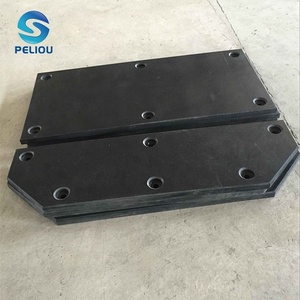

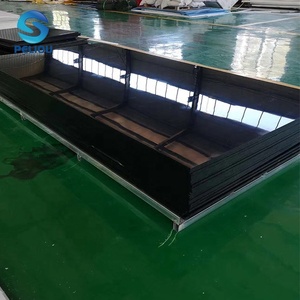
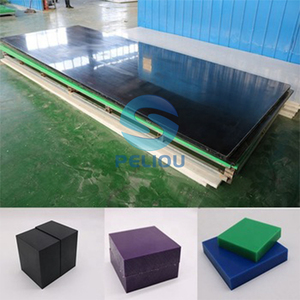


















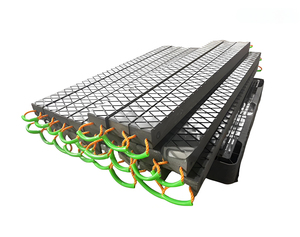
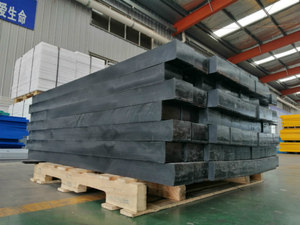



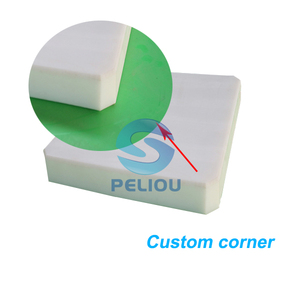




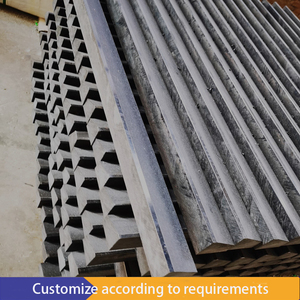




HDPE sleepers are made from high-density polyethylene and are used within the railway to provide stability and support to the tracks. There are different types of HDPE sleepers, including:
Reinforced HDPE Sleepers
Reinforced HDPE sleepers have additional materials like steel or carbon additives incorporated into their design. These materials are added to enhance the strength and durability of the sleepers. The reinforcement makes these sleepers suitable for heavy rail traffic and harsh environmental conditions.
Composite HDPE Sleepers
The composite HDPE sleepers are a blend of HDPE and other materials like concrete or rubber. This combination aims to take advantage of the good qualities of all the materials involved. For instance, the composite sleepers can be more flexible than pure HDPE sleepers but still maintain the same level of strength and resistance to chemicals and moisture.
HDPE Sleepers with Built-in Sensors
These innovative HDPE sleepers have sensors built into their design. The sensors are meant to monitor various parameters like track conditions, temperature, and vibrations. This technology helps in proactive maintenance, ensuring the railway infrastructure is safe and efficient.
Colored HDPE Sleepers
These sleepers come in a wide range of colors. The colors are added using pigments and are available in various shades. The primary purpose of these sleepers is to blend in with the surrounding environment or to identify different track sections easily.
HDPE Sleepers with Noise-Reducing Features
These types of HDPE sleepers are designed to minimize the noise level caused by trains passing. They come with features like acoustic insulation or vibration-dampening materials. The primary purpose of these sleepers is to reduce the environmental impact of railways in noise-sensitive areas.
When selecting HDPE sleepers for a project, various considerations ensure that the choice meets operational and environmental requirements. Firstly, the intended use and application are crucial. Sleepers are needed for standard rail lines; therefore, they should be strong and durable. For example, HDPE sleepers are ideal for heavy loads and harsh conditions. Secondly, environmental considerations are essential. HDPE sleepers are preferred because they are eco-friendly and can be recycled. Thirdly, the cost and life cycle of the sleeper should be considered. Although HDPE sleepers are costly at first, their long life span makes them cheaper. Fourthly, the design and customization feature should be considered. Sleepers should be customizable to fit the needs of various projects. Finally, manufacturer reputation and certification are necessary. These ensure that the sleepers meet the required standards.
Railway sleepers are critical to the design, features, and functions of any railway line. They offer the track its stability and support. The sleepers are constructed with various materials and come in different designs. Some of the commonly used materials are concrete, wood, and steel. The design of the sleepers is also dependent on the material used. For instance, concrete sleepers are pre-stressed for added strength. They are also designed with rail fastening systems to secure the rails in place. Wooden sleepers have steel plates and spikes attached to them. The function of the sleeper is to keep the rails at the correct gauge. They also distribute the weight of the trains to the ballast and subgrade. Additionally, the sleepers absorb any vibrations caused by the trains.
HDPE (High-Density Polyethylene) railway sleepers have been developed as an improved alternative to traditional wooden and concrete sleepers. They are developed to be an improvement over traditional railway sleepers. They come with features and functions that make them suitable for modern railway applications.
HDPE railway sleepers are inherently light, which makes them easy to handle and install. They can be moved around easily compared to wooden and concrete sleepers. They are also strong and resilient to cope with the demands of railway applications. Another important feature of HDPE railway sleepers is their resistance to extreme weather conditions. They can operate in very high or low temperatures without becoming brittle or deforming. Additionally, they are made from recycled plastic, which makes them environmentally friendly. Their long lifespan also contributes to their sustainability.
In addition to their main function of supporting the railway track, HDPE railway sleepers have additional functions. For instance, they offer added electrical insulation, which is a benefit in applications where signalling systems depend on the conduction of electricity through the rails. Also, they are resistant to a wide range of chemicals, which means they are suitable for use in industrial areas where there is a risk of chemical spills.
HDPE sleepers are generally considered safe and of good quality. However, their safety and quality may depend on various factors, including the manufacturing process, materials used, and adherence to industry standards. Here are some points to consider regarding the safety and quality of HDPE (High-Density Polyethylene) sleepers:
Durability
HDPE sleepers are known for their durability. They can withstand harsh environmental conditions, including extreme temperatures, moisture, and chemical exposure. This ensures they are durable and safe for long-term use.
Corrosion Resistance
Unlike traditional wooden sleepers, HDPE sleepers are resistant to corrosion. They do not rot or degrade over time when exposed to water or soil. This makes them a safe and reliable option for railway applications.
Non-Toxicity
HDPE is a non-toxic and safe material. It does not leach harmful chemicals or pollutants into the environment. This makes HDPE sleepers safe for use in sensitive areas, such as agricultural or drinking water applications.
Recyclability
HDPE has excellent recyclability. They can be recycled at the end of their life and repurposed into new products. This contributes to sustainability and reduces environmental impact. However, it is important to ensure that HDPE sleepers are manufactured from clean, uncontaminated materials to maintain their safety and quality during the recycling process.
Compliance with Standards
To ensure their safety and quality, it is important that HDPE sleepers comply with industry standards. These standards are set by organizations such as the American Society for Testing and Materials (ASTM) or the International Organization for Standardization (ISO). Compliance ensures that HDPE sleepers meet safety, quality, and performance requirements.
Q1: What are the benefits of HDPE sleepers over traditional wooden ones?
A1: HDPE sleepers last longer and need less maintenance than wood ones. They also don't break down as quickly and are less likely to be affected by the weather. Furthermore, they help the railway industry become greener by recycling plastic and reducing the amount of new wood used.
Q2: How are HDPE sleepers made?
A2: To make HDPE sleepers, recycled plastic is collected, cleaned, and then melted down into a gooey substance. This liquid is then poured into molds shaped like the sleepers needed for the railway. Once cooled and hardened, the sleepers are ready to be used.
Q3: Can HDPE sleepers be used anywhere?
A3: Yes, they can. HDPE sleepers are versatile and can be used for various applications, including private railways, busy train lines, and places with extreme weather. They work well in every situation because they are so tough and last so long.
Q4: How long do HDPE sleepers last?
A4: HDPE sleepers can last for decades. They are made of strong plastic that doesn't break down easily, even in harsh conditions. This long life means less money spent on replacing them and less plastic waste.
Q5: Are HDPE sleepers safe for the environment?
A5: Yes, they are. HDPE sleepers help reduce plastic waste by using recycled materials that would otherwise end up in a landfill. They also reduce the need to chop down trees for wooden sleepers, making them a safer choice for the environment.